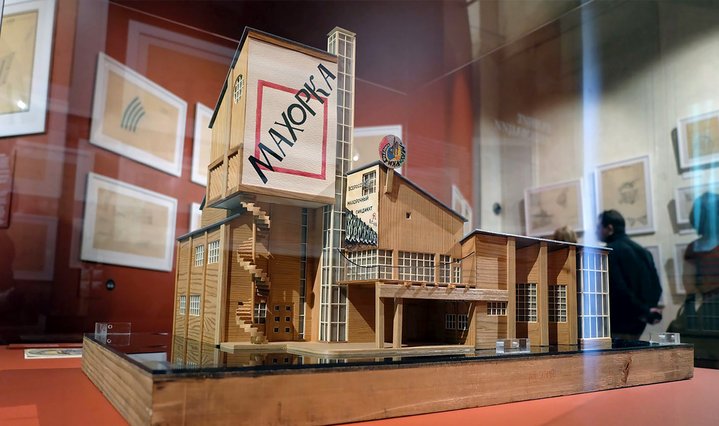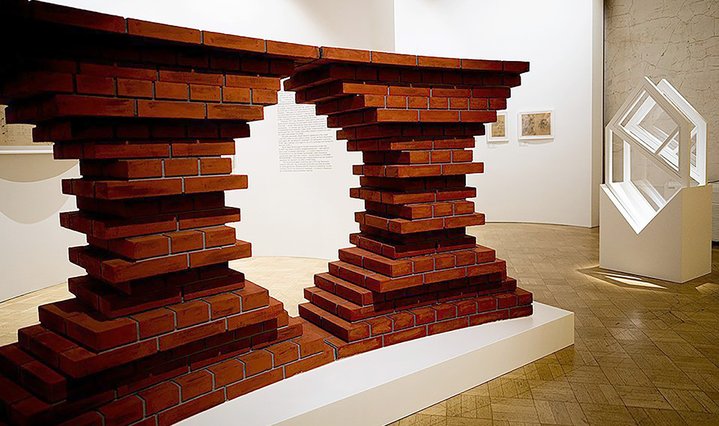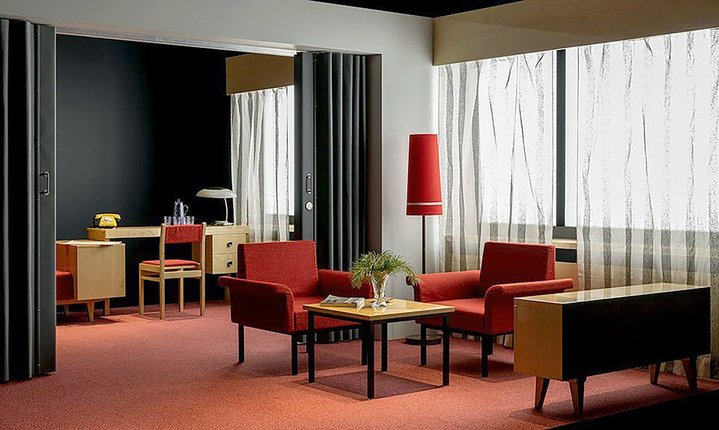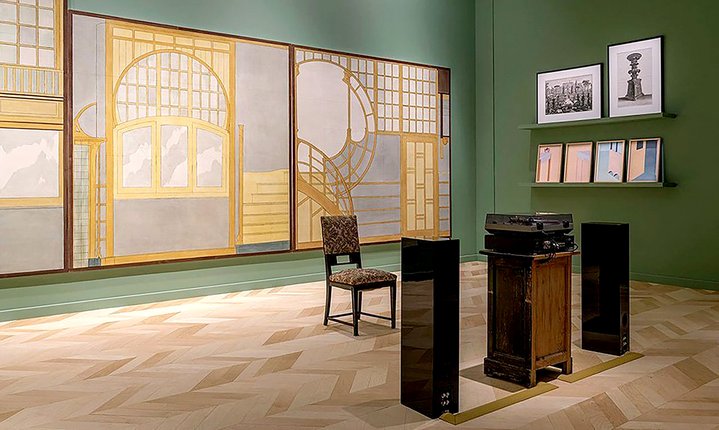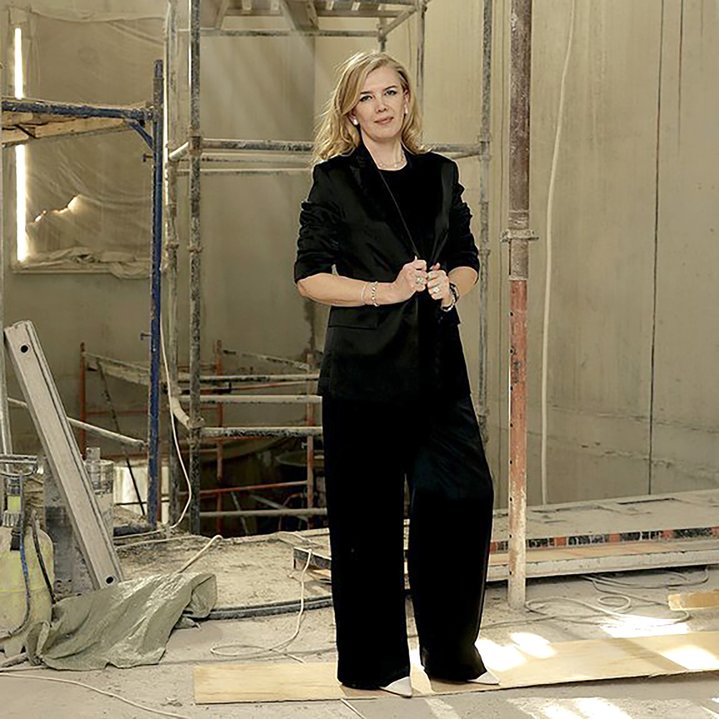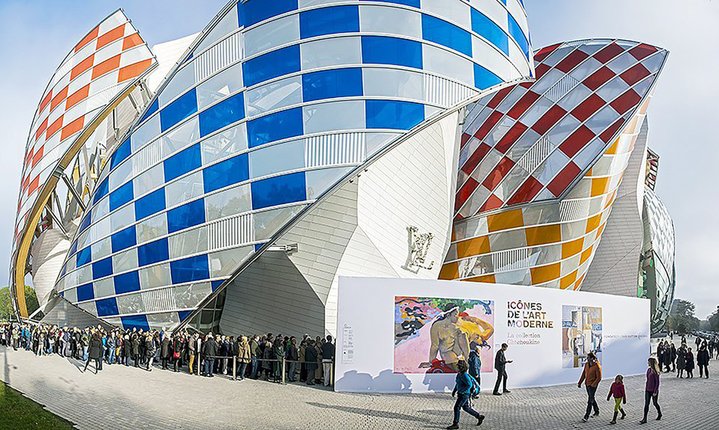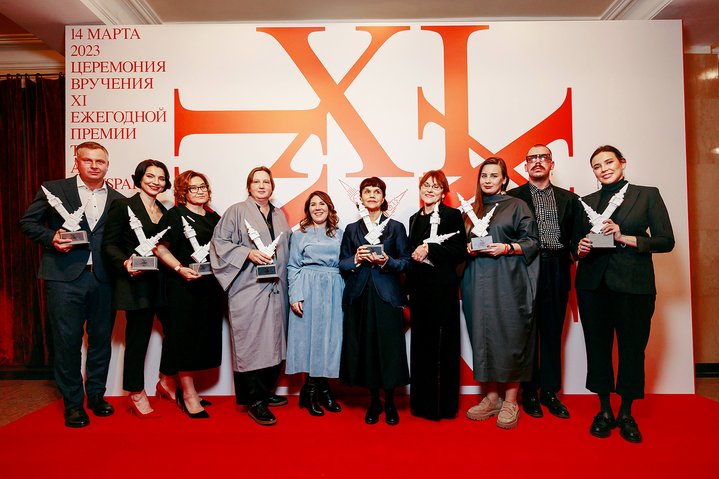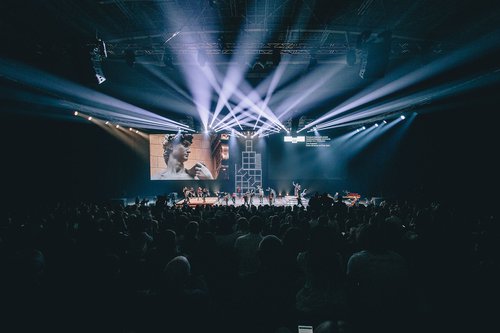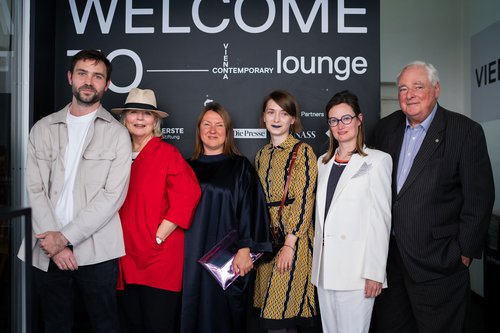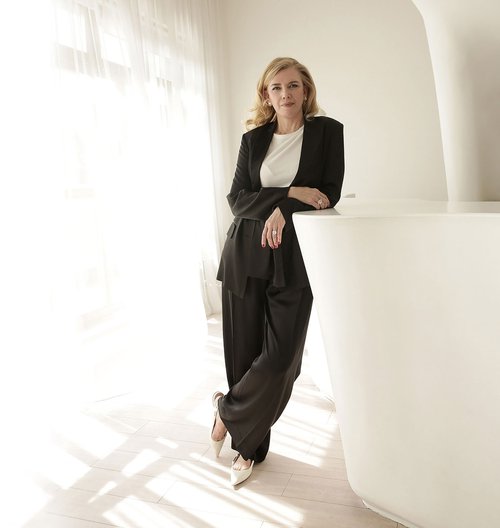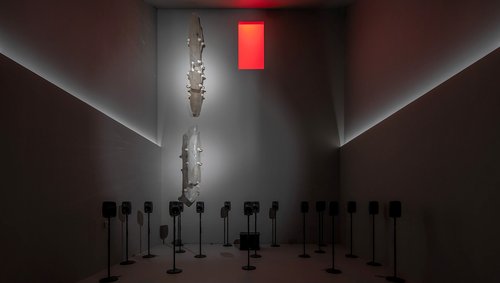Winners of The Art Newspaper Russia Award are named in Moscow

The winners of the XIth The Art Newspaper Award edition, launched by our sister publication, have been announced in Moscow. Awards were given in five categories ‘Museum of the Year’, ‘Exhibition of the Year’, ‘Book of the Year’, ‘Restoration of the Year’ and ‘Personal Contribution’. There was also a Special Prize this year. Here our colleagues from The Art Newspaper Russia shared a few interesting facts about the winners.
The winner of the Museum of the Year went to the Nizhny Novgorod State Art Museum under the current directorship of Roman Zhukarin. The prize recognizes the radical renovation of the museum which is one of the oldest in Russia as well as the development of new themes and venues. Opened in 1896, it was originally combined with the Historical Museum and located in the Dmitrov Tower of the Nizhny Novgorod Kremlin. The first exhibition to take place there was captured by outstanding photographers Maksim Dmitriev and Andrey Karelin. More recently, for the 800th anniversary of Nizhny Novgorod, which was celebrated in 2021, the museum underwent a dramatic renovation and significantly increased its size. It now occupies three sites: the Governor's House in the Kremlin with a display of Russian art, the Sirotkin House with Western art and a new space for Russian avant-garde; and it oversees a fourth, an exhibition hall in the restored historic Manege in the Kremlin.
The house of merchant Dmitry Sirotkin, where international art is exhibited, was built in the neoclassical style in 1916 after a design by the three brothers Leonid, Victor and Alexander Vesnin, who later became famous constructivists. It is interesting to note that the building was designed with rooms for works of art in mind.
The 1896 painting Minin's Call (Minin on the Square of Nizhny Novgorod, Calling the People for Donations) by Konstantin Makovsky is considered to be the largest oil painting in Russian art, dedicated to a subject from Russian history. It measures seven by six metres. It is now on display in a separate room, accompanied by an audio installation that allows you to hear the voices of the characters in the picture. The museum's collection has a total of 12,000 items, ranging from icons to works by contemporary artists.
The newly opened space on Minin and Pozharsky Square makes it possible to appreciate the outstanding collection of the Russian avant-garde at the Nizhny Novgorod Museum. There are 50 works, mainly paintings. Nizhny Novgorod was among the first cities where, after the revolution, they planned to create a museum of visual culture, and for this purpose works by established artists from the Russian capital were sent here. Among the masterpieces were Wassily Kandinsky's (1866–1944) ‘Improvisation 4’ (1879–1935), Kazimir Malevich's (1879–1935) ‘Squint’, Mikhail Larionov's (1881–1964) ‘Katsapskaya Venus’ and Natalia Goncharova's (1881–1962) ‘Squirrels’. Also noteworthy is a double-sided painting by Nikolai Sinezubov (1891–1956) from 1918-1920, with ‘Tea Party’ on one side and ‘Barricade’ on the reverse, also known as ‘Christ among the Homeless’.
The State Tretyakov Gallery restoration department, under the directorship of Andrey Golubeiko, received the award for the restoration of Ilya Repin’s painting ‘Ivan the Terrible and his Son Ivan on 16th November 1581’, which was painted in 1885. The prize acknowledged in particular its insightful scientific approach and new technological developments in the restoration of this long-suffering masterpiece of Russian painting. Widely known as ‘Ivan the Terrible Killing His Son’, the official name of this painting is ‘Ivan the Terrible and His Son Ivan on the 16th of November 1581’. This has been the custom since pre-revolutionary times: from the point of view of imperial censorship, the Tsar could not ‘kill’ anyone.
The first attack on the painting took place in 1913 when it was stabbed. The attacker was placed in a clinic for the mentally ill, and what happened to him in the tumultuous years that followed is unknown. The second attack happened over a century later in 2018 when it was beaten with a metal fence post. Eleven months later, the attacker was sentenced to 2.5 years in prison, with time in isolation being counted as a day and a half. He is now free. In 2021, Icelandic artist Ragnar Kjartansson (b.1976) made a video reenactment of both attacks for an exhibition at Moscow’s GES-2, calling it ‘Grozny the Threatening’. On two giant screens they were shown as parallel events. The restoration itself took four years to complete. To restore the canvas, the Tretyakov Gallery even created a special workshop and a giant robotic restoration table. The painting will return to the museum's permanent exhibition only after it has been placed in an anti-vandal display case.
This year’s winner of the coveted book of the year award goes to an exhibition catalogue produced by the Shchusev State Museum of Architecture on the Soviet architect Konstantin Melnikov. The completeness and accuracy of the chronology of Konstantin Melnikov's (1890–1974) life, as presented in the catalogue, is unprecedented. The timeline has been collected piece by piece by deciphering the architect's fragmentary diary entries, tracing personal files in the archives and studying periodicals covering many years. The articles occupy almost half of this weighty tome: it is more than the exhibition catalogue. A third of the dozen texts are by international writers, which underlines Melnikov's global fame. The catalogue shows that Melnikov is not as well researched as one might have assumed. For example, Dina Kosterina reveals the details of the architect's work on the first sarcophagus for the body of Vladimir Lenin, while Jean-Louis Cohen sheds light on the fate of the famous Paris pavilion, which, after the 1925 World Fair, was found to have been presented to the French Communist Party, reassembled at another location, managed to serve Surrealist painters and was only dismantled in 1945.
The book contains a wealth of rare materials, some of which have been published for the first time: photographs, student sketches, paintings, sketches of projects, documents and letters. The Melnikov House archive became even more accessible to researchers and those interested. The catalogue fully reveals the colourful and paradoxical personality of Konstantin Melnikov, who was a bold experimenter in architecture, an unexpectedly traditional painter and a bearer of extravagant ideas (such as about death and sleep). Reproductions of the master's unrealized projects show us his unexpected hypostasis: in his student days he was a classicist architect, while in the years of oblivion he was a modernist architect, keeping up with the times in spite of everything.
The art exhibition of the year went to a show at GES-2 which opened in November last year and has just closed: Tuning-3. Society for Private Musical Performances’. A project conceived by a team of five curators including Andrey Vasilenko, Andrey Parshikov, Dmitry Renansky, Andrey Titov-Vrublevsky, Ekaterina Chuchalina, Elena Yaichnikova. The architect of the project was Elizaveta Sazonova and the set designer Alexandr Barmenkov. The prize acknowledged just how innovative this project was which offered the experience of a synthesis between classical and modernist music, architecture and contemporary art.
Unlike the first two parts of this project (Tuning and Tuning-2), which were based on works by contemporary Russian composers, Tuning-3 turned to an archive of the classics. Seven pieces of music by various composers created between the twelfth and twentieth centuries were selected for the exhibition. The colours of the pavilions encoded the maximum height of sound waves of the works. The hues of the pavilions corresponded to the highest note of each of the works. The intervals of the sound wave set the rhythm for the facades. No less than 31 artists and composers were included in the exhibition. Here, for the first time in Russia, works by Alberto Giacometti (1901–1966) (Grey Figure, 1957) and Francis Bacon (1909–1992) (Sketch to a Portrait, 1953) (both from the collection of the V-A-C Foundation) could be seen in one space, the latter being part of the Urangst installation by contemporary artist Irina Korina (b.1977).
The first pavilion in the exhibition was dedicated to Arnold Schoenberg, who invented the very Society for Private Music Performance referenced in the subtitle of the exhibition, to achieve the ideal conditions for performing and experiencing contemporary music and to capture and comprehend the sound of the new age. The last pavilion in the exhibition, dedicated to Richard Wagner, was open to a maximum of two people. This alluded to the fact that Ludwig of Bavaria enjoyed a very intimate relationship with the composer: from 1872 onwards, the king attended his operas without an audience – performances in Munich's National Theatre were given for one single person.
Receiving the award for outstanding personal contribution to the arts in Russia is Marianna Sardarova, private collector, philanthropist, founder of the Ruarts Foundation for the Promotion of Contemporary Art and Ruarts Gallery. Sardarova chose Fondation Maeght, near Saint-Paul-de-Vence on the French Riviera, as the model for the Ruarts Foundation which she established in 2003, with its many activities: exhibitions, book publishing, and the production of works and projects. More than 60,000 people have visited the new RuArts Foundation building since it opened in 2021. Eleven exhibitions have been held there (including Soft Homeland, which showcased the foundation's collection, and True Ly, an exhibition of Russian artists with a background in graffiti and street art), and now the 12th, called The Great Void and presenting exclusively contemporary female artists, is in the planning. During the nearly two decades of its existence, the Ruarts Gallery which was established in 2004 has held over 100 solo and group exhibitions by national and international artists of different generations. The gallery represents two dozen artists today, including street artists.
Both venues - the gallery in 1st Zachatievsky Lane and her Foundation in Trubnikovsky Lane – were built by the same architects, Anton Nadtochiy and Vera Butko from the Atrium Bureau. Both buildings are linked in spirit and individual elements. For example, the new Foundation building has a spectacular concrete staircase, which echoes the well-trodden staircase in the gallery, which is also on its logo. The foundation's collection and Marianna Sardarova's personal collection are not one and the same. “My collection has a female face,” she says, “As a rule, it is men who finance artistic purchases, including dictating what to buy. The peculiarity of my collection is that I have been given the freedom to buy only what I like, without relying on anyone else's choice”.
This year a special prize was awarded to the international exhibition project dedicated to art collectors Sergei Schchukin and Ivan Morozov, a joint project between the State Tretyakov Gallery, The Pushkin State Museum of Fine Arts, the State Hermitage Museum and the Louis Vuitton Foundation in Paris. This project comprised six exhibitions staged over as many years, starting with the ‘Icons of Modern Art. The Schchukin Collection’ at the Louis Vuitton Foundation in Paris, (22 October 2016 - 20 February 2017); followed by ‘Schchukin. Biography of a Collection’ at the Pushkin State Museum of Fine Arts (Moscow, 19 June - 15 September 2019). Then in St Petersburg came ‘The Morozov Brothers. The Great Russian Collectors’ at the State Hermitage Museum (St. Petersburg, 23 June - 6 October 2019) before the second iteration in Paris, ‘The Morozov Collection. Icons of Modern Art’, Louis Vuitton Foundation (Paris, 22 September 2021 - 3 April 2022. In Moscow last year there was ‘Brother Ivan. Collections of Mikhail and Ivan Morozov’, Pushkin State Museum of Fine Arts (Moscow, 28 June - 30 October 2022) and last but not least ‘The Birth of Modern Art: the Choice of Sergey Schchukin’, at the State Hermitage (St. Petersburg, 26 June - 30 October 2022). The prize recognizes what is undeniably a brilliant accomplishment for all parties, and an international art project on an unprecedented scale.
The Paris exhibition of the Shchukin collection was the most visited exhibition in the world in 2017: 1.2 million people attended it. All six exhibitions at the three museums were visited by 4,569,072 exhibitiongoers, which is about as many as pass through the Hermitage, the Tretyakov Gallery and the Pushkin State Museum of Fine Arts combined, in a year. Each exhibition included around 150 or more works, and a market value running into the tens or even hundreds of millions of euros. The rules for transporting museum pieces on the same plane could not exceed €300 million, which meant that one plane could take only two or three paintings at once. The logistics were complex. The project brought together for the first time the collections of Sergei Schchukin, Ivan and Mikhail Morozov normally divided between the State Hermitage and the Pushkin State Museum of Fine Arts, so that the public could appreciate the differences in the taste and approaches of these two contemporary collectors in their entirety.
Immediately after nationalization by the Bolsheviks, these collections of French modernism formed the core of the State Museum of New Western Art (SMNWA), which was disbanded in 1948. Recreating this museum was a dream of the legendary director of the Pushkin Museum, Irina Antonova. It has now been recreated in virtual space. Anna Baldassari, curator of both Paris exhibitions complemented the exhibitions with works by Russian avant-garde artists from the collection of the Tretyakov Gallery and from personal collections.
Mercury has been a general partner of the award since 2019 and is not the brand's first foray into supporting cultural events. From 2016, the company has been the general partner of the Golden Eagle National Film Awards and the creator of all the prizes. Since 2021 it has been a partner of the Moscow International Film Festival (MIFF), as well as the creator of all the awards at the international film festival. The Mercury jewellery is widely known for its cultural, charitable and social projects and its active support of women in business.
This article was first published on the website of The Art Newspaper Russia on 14 March 2023.








